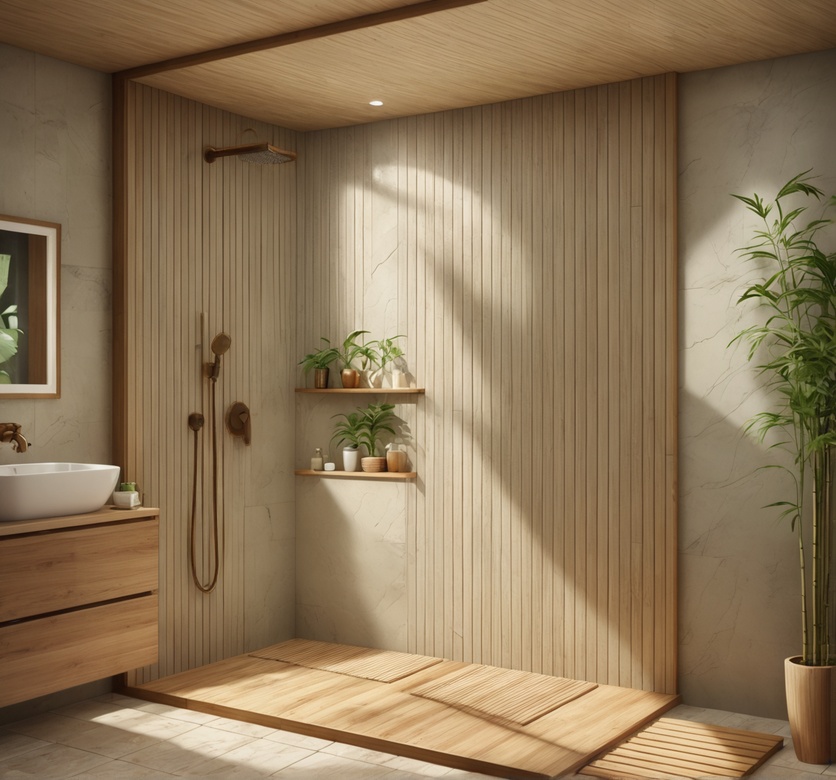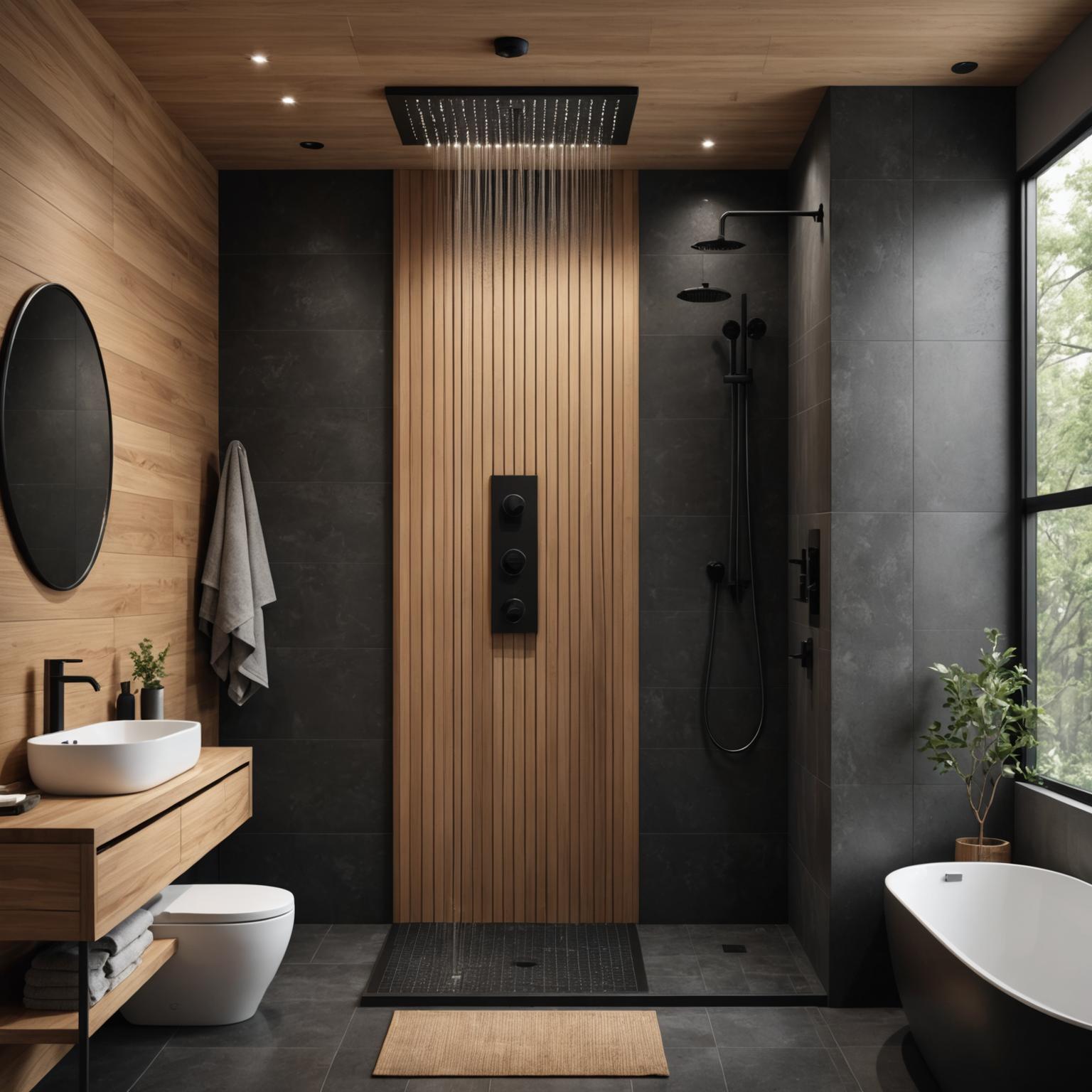The evolution of interior and exterior design has introduced a wealth of materials that redefine our living spaces, turning them from mere shelters into curated experiences. Among the most transformative of these are wall panels, a solution that brilliantly merges aesthetic appeal with practical functionality. No longer just a simple covering, these panels have become a cornerstone of modern architecture, offering a canvas for designers to express texture, color, and form. They create focal points, add warmth, and introduce a level of sophistication that was once the exclusive domain of high-end commercial projects. Now, this design elegance is making its way into every corner of the home, creating bespoke environments that reflect personal style and a commitment to quality.

A Sanctuary of Style: The Rise of Sophisticated Interior Wall Panels
Nowhere is this trend more beautifully realized than in the personal sanctuary of the bathroom. A stunning example of this design philosophy is the Apollo Linear Shower System, a masterpiece of minimalist elegance and modern functionality. The first thing that captivates the senses is the striking vertical wood paneling, which serves as the system’s backdrop. These are not just any panels; they are meticulously crafted from sustainably sourced timber, specially treated to withstand the high-moisture environment of a shower. This choice of material brings a touch of nature indoors, creating a warm, chic ambience reminiscent of a Scandinavian spa. The tactile quality of the wood grain contrasts beautifully with the sleek, modern fixtures, demonstrating how interior wall panels can be the heart of a room’s design, setting the tone for the entire space. This system proves that functionality and high design can coexist, offering a seamless, grout-free surface that is both beautiful and easy to maintain.
The Heart of the Experience: Integrated Design
The beauty of using high-quality wall panels, as seen in the Apollo system, is how they integrate with other elements to create a cohesive whole. The warm wood is perfectly complemented by a matte black showerhead and a sleek handheld unit, creating a dramatic yet harmonious visual contrast. Central to the experience is a cleverly recessed shelf, illuminated by integrated lighting. This feature transforms a simple storage space into a modern display, highlighting bathing essentials like pieces of art. The entire ensemble is built upon a pure white base tray, a geometric platform that manages drainage efficiently while keeping the aesthetic clean and uncluttered. A frameless glass enclosure maintains the open, airy feel, ensuring the magnificent wood paneling remains the star of the show. It is a perfect illustration of how interior wall panels can anchor a design, allowing other features to shine in relation to them.
Transforming Spaces: The Versatility of Interior Wall Panels
While the bathroom provides a powerful example, the application of interior wall panels extends far beyond. In living rooms, a single feature wall clad in textured or 3D panels can become a stunning focal point, adding depth and architectural interest without overwhelming the space. In bedrooms, upholstered panels behind the bed can create a soft, luxurious headboard that also offers acoustic benefits, muffling sound for a more peaceful rest. Materials range from natural wood and stone veneers to lightweight, easy-to-install PVC and modern composites, offering a solution for every style and budget. They can be used to hide wall imperfections, improve insulation, and contribute to a room’s overall thermal and acoustic comfort, proving their value is more than just skin deep.
Durability Meets Design: The Role of Exterior Wall Panels
Moving to the building’s facade, exterior wall panels serve a dual purpose of paramount importance: protection and aesthetic identity. These robust systems are the first line of defense against the elements, engineered to resist wind, rain, and UV radiation, thereby safeguarding the structural integrity of the building. Modern exterior wall panels often form part of a rainscreen system, which creates an air gap between the cladding and the building’s weather-resistant barrier. This promotes drainage and ventilation, preventing moisture buildup and enhancing the building’s longevity and energy efficiency. The visual impact is just as significant. The clean lines and large formats of exterior wall panels lend a sleek, contemporary look to any structure. Materials like aluminum composite, fiber cement, and high-pressure laminates offer an endless palette of colors and finishes, from matte surfaces to metallic sheens and realistic wood grains, allowing architects to craft truly unique and expressive building exteriors.
Making the Right Choice: Selecting Your Perfect Wall Panels
Choosing the right product requires careful consideration of both form and function. For an interior project, think about the room’s purpose. High-moisture areas like bathrooms and kitchens demand water-resistant materials, while living areas allow for a broader choice, including textiles and natural woods. For a building’s facade, the primary driver is durability. Your choice of exterior wall panels should be heavily influenced by your local climate, exposure to sunlight, and regional building codes. Beyond the technical aspects, consider the overall architectural style. Whether you aim for a rustic look with reclaimed wood cladding or a futuristic aesthetic with metallic panels, the right choice will unify your design and significantly enhance curb appeal, ensuring your investment is both beautiful and long-lasting.
The Future is Paneled: A Final Word on Wall Coverings
From the intimate warmth of a wood-clad shower to the bold statement of a modern facade, the world of wall panels offers boundless possibilities. They represent a fundamental shift in how we think about surfaces, moving away from simple paint and wallpaper towards more integrated, architectural solutions. These systems provide a unique opportunity to infuse a space with texture, personality, and sophisticated style. As materials technology continues to advance, we can expect to see even more innovative and sustainable options for both interior wall panels and exterior wall panels, further empowering us to create environments that are not only visually stunning but also smarter, more durable, and perfectly attuned to our needs.

